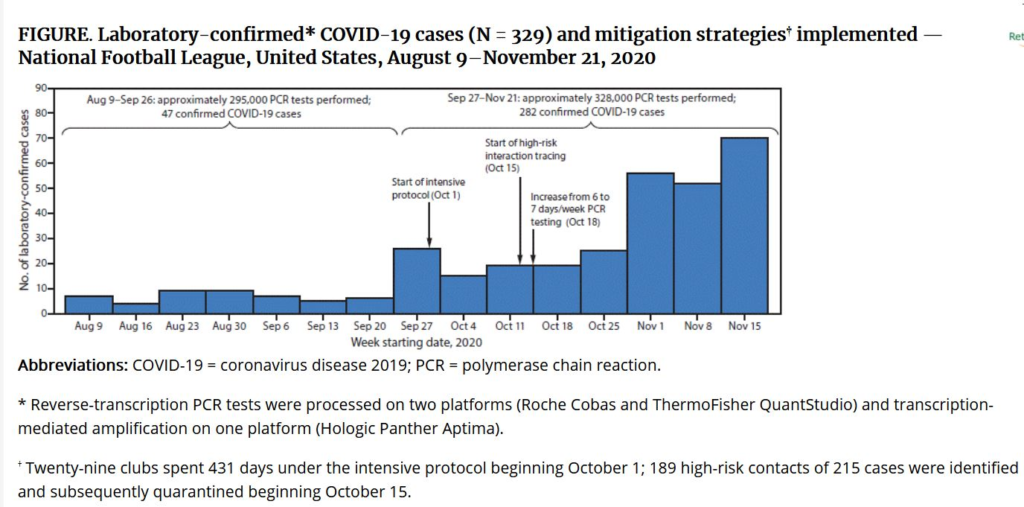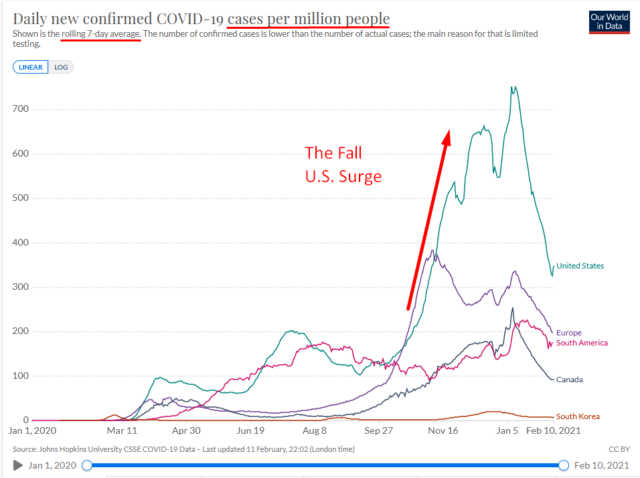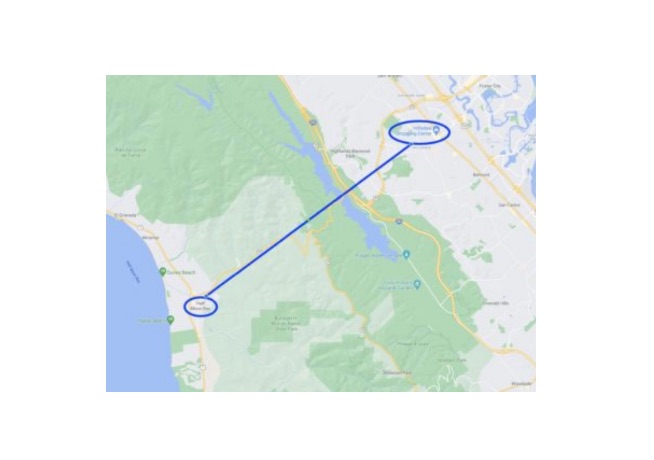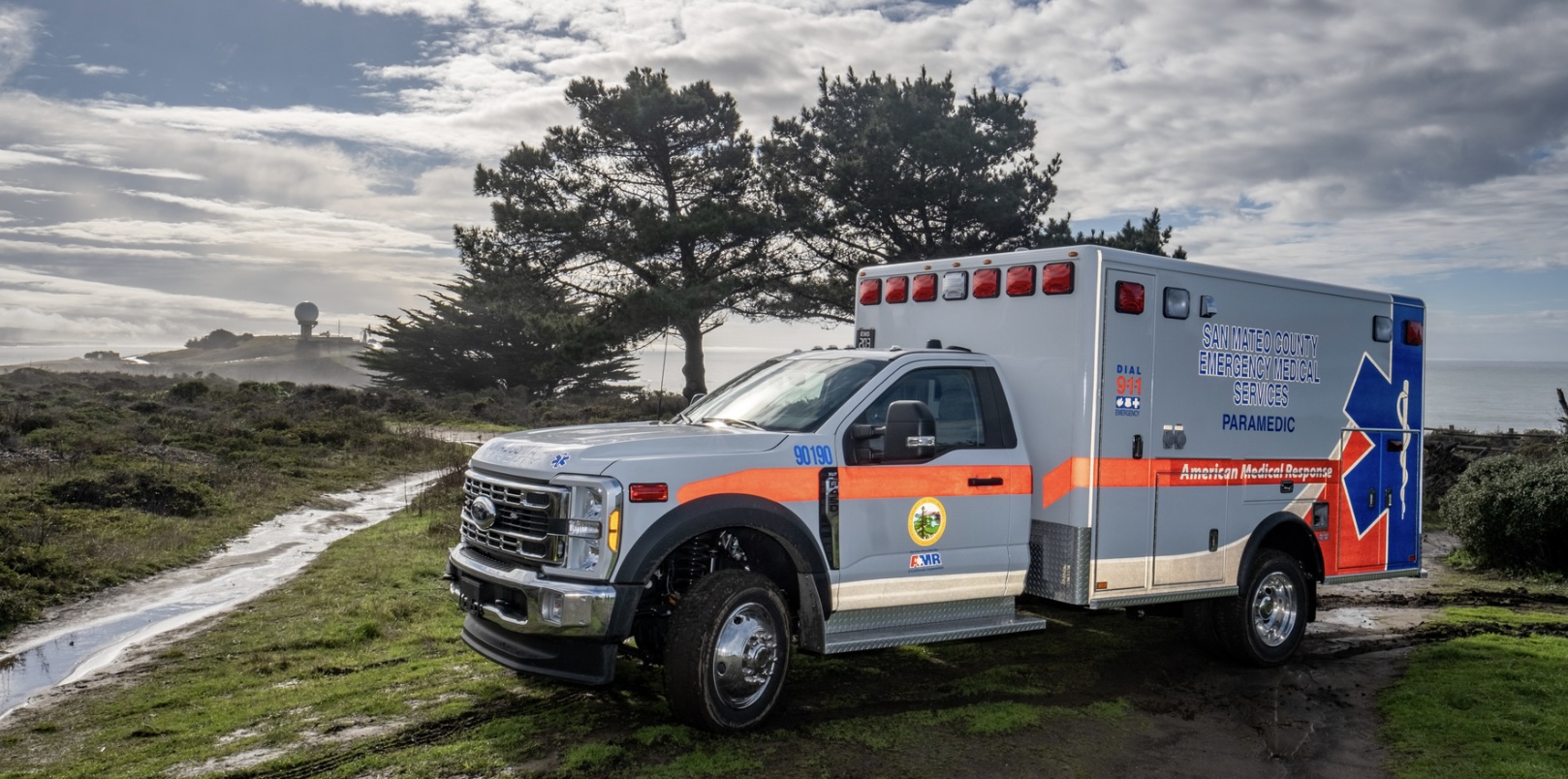|
Getting your Trinity Audio player ready...
|
OWN VOICE. ~ InPerspective by Bruce Laird, with Gregg Dieguez —
Now that the NFL completed an entire season of 269 games without a cancellation (though it was close), people are saying “The NFL Beat COVID-19”. Not quite. It was more like “The NFL Ran Away And Hid From COVID-19”, which is exactly what WE should have done. Here’s how – without a vaccine – the NFL used classical Public Health measures of Transmission, Testing, and Contact Tracing to preserve lives and health and continue to make billions….
Footnotes: to use, click the bracketed number and then click your browser Back button to return to the text where you were reading.
Images: most will enlarge for improved readability in a new window when you click on them.
And yes, it turns out that making billions is sufficient incentive to recognize the reality of COVID-19, and to do what the rest of the county should have been doing to prevent the spread of COVID among its players and staff. They were doing a large scale experiment in epidemiological mitigation, mostly out of sight from the fans. Of course, they had company, such as in Taiwan, Iceland, South Korea and other countries with widespread understanding of the concept of the Interdependent Self – which also led to individual personal responsibility and large reductions in COVID-19 cases and deaths.
During the 2020/21 professional football season, NFL players were the most frequently tested people in America. In order to protect their franchises and minimize the number of infections and cancelled games, team owners and the Players Association agreed to invest in and operate a comprehensive program of testing, quarantine, and contact tracing that would make even Taiwanese [1],[2] and Icelanders[3] jealous. According to a CDC report[4], from 9 Aug to 21 Nov 2020, the league performed 623,000 PCR tests among approximately 11,400 players and staff members. The players were tested daily, and staff members were tested anywhere from 1 to 6 times per week, depending on frequency and duration of contacts with players.[5]
The NFL hired consultants to work in conjunction with the CDC’s COVID-19 Response Team to set up safety protocols; hire staff to administer tests and do contact tracing interviews; process and understand the testing data; and make important adjustments to the rules. The initial protocol, put in place back in Jul 2020, had Public Health mitigation measures that “emphasized physical distancing, masking, limited numbers of persons in specific areas, and other important behavioral and facility-related parameters.”
It may surprise you to learn what the NFL discovered as a result of several major outbreaks last fall, in spite of implementing rigorous PH mitigation protocols. The results of one outbreak within the Tennessee Titans team, and a discussion of the steps taken by the NFL to limit other outbreaks, have been written up in a CDC Morbidity and Mortality Weekly Report.
Key lessons learned about transmission
1. Transmissions occurred during contacts involving much less than 15 minutes of cumulative interaction within 6 feet. Of the 21 cases recorded in the Titans outbreak, twelve had zero interactions with a COVID Positive person lasting longer than 15 consecutive minutes. Of those twelve:
– Eight had no recorded interactions lasting longer than 5 consecutive minutes.
– Seven had no interactions totaling more than 15 cumulative minutes per day (with no other known exposures to a person with COVID-19).
– These conclusions were based on data from proximity recording devices required to be worn by all personnel, when present in both indoor and outdoor team facilities.
2. Contact tracing interviews revealed that among the brief interactions that did occur, some were during unmasked meetings in small rooms or while eating. This led to the closure of team dining facilities, and adjustment of meeting rules, among other things.
3. Cumulative minutes of exposure also mattered. Exposures from repeated brief close contacts occurring over the period of one day, added up and led to infections.
Best practices for surveillance and control
1. Daily COVID-19 testing allowed early, albeit not immediate, identification of infections.
2. The high frequency of testing also facilitated real-time evaluation and adjustments to the safety protocols.
3. Spread was limited by mandatory 5-day quarantines after exposure (as determined either by testing Positive, or from contact tracing).
The initial Standard Protocol (SP)
Teams began the season in July with everyone following what was called the Standard Protocol. This included “mandatory masking; physical distancing; frequent handwashing; facility disinfection; restricted facility access; and regular, frequent testing of players and staff members.” You know – all the behaviors you have been practicing at home and on infrequent trips to the grocery. Right!?!
The SP also required players and staff to wear location tracking and proximity detecting devices while practicing or working out at team facilities. While this level of instrumentation isn’t practical for the general public, the data from these devices enabled an unprecedented degree of contact tracing that has improved our knowledge of how the virus can spread. [6] As explained in the MMWR:
“Contact tracing was performed by trained staff members and supported by KINEXON wearable proximity devices (https://kinexon.comexternal icon) that were required to be worn by players and personnel when in club environments. Device recordings captured consecutive and cumulative minutes/seconds of interactions among persons within 1.8 meters (6 feet) of one another. When testing identified a new COVID-19 case, trained staff members conducted interviews to identify contacts including and beyond device-identified persons (e.g., nonclub activities, social interactions, and times when the device was not worn). RT-PCR tests, with results available in 24 hours, were initially conducted 6 days per week for players and most staff members. Analyses were performed to actively evaluate the efficacy of the NFL-NFLPA protocols in limiting high-risk interactions and preventing COVID-19, including comprehensive review of RT-PCR results, device-recorded interactions, and contact tracing interviews. This activity was reviewed by CDC.”
For the first 7 weeks of the season, just 47 cases were identified among 11,400 personnel throughout the league – less than 7 cases per week, and an average infection rate of 0.06% per week, across 32 teams. Then, in the two weeks between 27 Sep and 10 Oct, a total of 41 cases were confirmed, 21 of them occurring at one club (the Tennessee Titans), which required temporary closure of the club’s facilities. The positive cases detected between 9 Aug and 21 Nov 2020, are shown in the below figure from the MMWR:

The Intensive Protocol
As a result of the sudden rise in cases at the end of September, some changes were made to the rules. First, the league adopted a revised definition of high-risk contacts, one “that required consideration of mask use, setting and room ventilation in addition to proximity and duration of interaction.” Then, on 1 Oct 2020, a so called Intensive Protocol was instituted. The IP was enforced for 7 days at any club, “if any players or staff members with facility access contracted COVID-19.” Or even, “if the team played a game against an opposing player who received a next-day positive result from his game-day test.”
During October 1–November 21, among the 32 clubs, 29 spent 431 days under the intensive protocol. The intensive protocol effectively prevented the occurrence of high-risk interactions, with no high-risk contacts identified for 71% of traced cases at clubs under the intensive protocol. The incorporation of the nature and location of the interaction, including mask use, indoor versus outdoor setting, and ventilation, in addition to proximity and duration, likely improved identification of exposed persons at higher risk for SARS-CoV-2 infection. Quarantine of these persons, along with testing and intensive protocols, can reduce spread of infection.
Looking at the graph above, it is not clear how effective the increased in-club measures really were. Even with the added precautions taken in the Standard Protocol, and with the imposition of the Intensive Protocol as a disincentive (along with large fines), there was still a big jump up in confirmed cases. The graph shows 282 new cases in the eight weeks ending 21 Nov; a very big increase over the prior seven weeks, and not a very good testimonial for the resource intensive protocols employed by the NFL. The CDC MMWR blames this on the rapid surge in community spread all around the US last fall [graph bellow]:

“The increase in cases identified in NFL clubs in October and November mirrored the increased incidence in the United States during that time. These infections [among NFL players] were primarily related to community exposures, based on contact tracing interviews and exemplified by the high proportion of persons who contracted COVID-19 after household exposure. Although the intensive protocol and high-risk contact designations were primarily intended to prevent work-related exposures, employees were regularly educated about risks from household and community exposure. Implementation of the intensive protocol decreased within-facility exposures despite increasing community transmission of COVID-19 across the country during this time.“
Bottom line:
It is sobering to read how hard the NFL worked to keep team personnel safe, and yet it almost got away from them. This NFL season was a clear demonstration that it’s not enough to be safe at work, no matter how detailed the precautions may be – if you are not also taking precautions at home, and while running errands in public indoor spaces. And of course, the NFL’s very rigorous contact tracing and quarantine measures (aided by proximity measuring devices) are only feasible/affordable in a very limited number of environments with deep pockets. So for example, not in correctional facilities, nor in long term care facilities, nor in meat processing plants, and certainly not in churches and synagogues.
That said, we can thank the NFL and the Players Association for adding to our understanding of just how easy it is to receive an infectious COVID-19 dose from close personal contacts of even a few minutes’ duration; and how cumulative exposure over the course of a day can add up.
——————-
FOOTNOTES:
[1]
Bruce Laird, “COVID Update 33. Testing and Contact tracing: how Taiwan controlled the outbreak.” Newsletter, 20 Apr 2020.
[2]
Shane Stokes, “How Taiwan has confounded predictions in fending off the worst of Covid-19,” Irish Times, 19 Apr 2020.
https://www.irishtimes.com/life-and-style/health-family/how-taiwan-has-confounded-predictions-in-fending-off-the-worst-of-covid-19-1.4229660
[interview w/ Peter Chang, professor of medicine at Tufts University School of Medicine in Boston. Previously he was a visiting scientist at the National Institutes of Health, a professor at Taipei Medical University and Kaohsiung Medical University, and a senior medical advisor to the National Taipei Hospital, in Taiwan.]
[3]
InPerspective: Sweden Done Right
– AND –
Bruce Laird, “COVID Update 59. Countries: Iceland vs. the United States.” Newsletter, 10 Jun 2020.
[4]
Christina D. Mack, et al, “Implementation and Evolution of Mitigation Measures, Testing, and Contact Tracing in the National Football League, August 9–November 21, 2020.” CDC MMWR, 29 Jan 2021.
https://www.cdc.gov/mmwr/volumes/70/wr/mm7004e2.htm
From the CDC MMWR cited above: “Staff members whose job functions required regular direct access to players for >10 minutes at a time and those who would regularly be in close proximity to players were tested 6 days per week (approximately two thirds of staff members). Consultants who were only in contact with players on a periodic basis were tested less frequently and immediately before access to players and club personnel. Other staff members who performed facility, stadium, or event services but did not require close contact with other persons were tested once per week.”
[5]
Final test totals from the NFL were 959,860 COVID-19 tests administered from Aug. 1 to this Saturday, with 262 players and 464 other personnel confirmed positive during that time frame.
[6]
Taiwan did this with cell phones. Calif. has a pilot program with limited participation.
More From Gregg Dieguez ~ “InPerspective”

Mr. Dieguez is a native San Franciscan, longtime San Mateo County resident, and semi-retired entrepreneur who causes occasional controversy on the Coastside. He is a member of the MCC, but his opinions here are his own, and not those of the Council. He lives in Montara. He loves a productive dialog in search of shared understanding.
<< Mr. Laird is another semi-successful, semi-retired MIT entrepreneur but with more degrees, living in Los Altos. They roomed and caused trouble together back in the day. Bruce produces a periodic newsletter on the science and implications of COVID-19. For a free subscription, contact Bruce at: laird2007@hotmail.com






